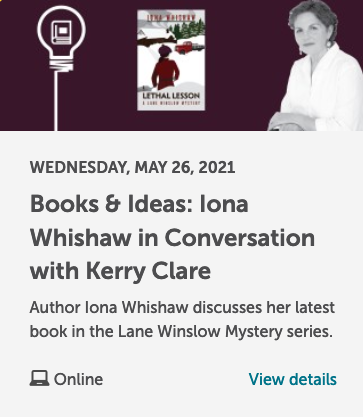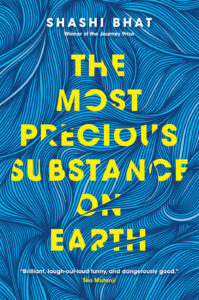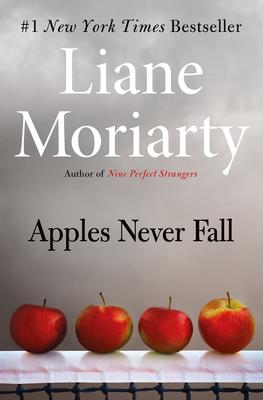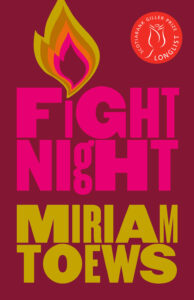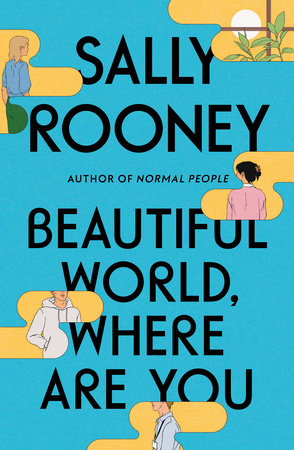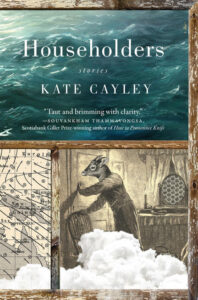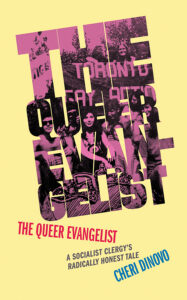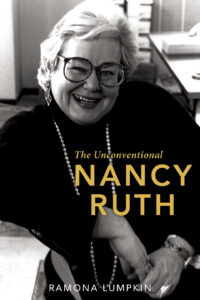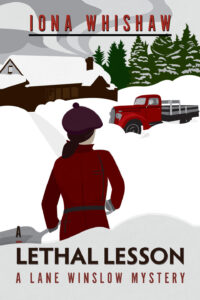October 20, 2021
The Most Precious Substance on Earth, by Shashi Bhat
In 2018, when I had the great honour (and pleasure!) of being one of three jurors for the Journey Prize, one of the standout parts of that experience was encountering Shashi Bhat’s writing for the very first time. Although I didn’t know the writing belonged to Bhat herself—the stories were submitted anonymously. All I knew was that “Mute,” which would go on to win the prize, was utterly distinct in terms of its narrative voice, and its clarity, and its point of view. So smart, and wise, and funny, and sad, and I don’t know that I’d ever read anything else quite like it.
And now with The Most Precious Substance on Earth, Bhat’s debut, there’s an entire book of this, and I just loved it, and was just as struck by Bhat’s storytelling as I was the first time I encountered it—her award-winning story “Mute” is actually included in the novel. Which indeed does function as a novel—just as it also stands up an impressive collection of short fiction, as Steven W. Beattie argues compellingly in a recent review—because the entire book is so satisfying and rewarding as a whole.
At first, the appeal was nostalgic, familiar, and I texted my best friends to instruct them to get their hands on this book immediately, because Bhat’s tales of late 1990s high school were just so absolutely transporting to this particular reader (me!) who spent Grades 9 and 10 eating lunch on the dusty wooden floors in the alcove outside the science office of a high school at no longer exists. But it wasn’t only the nostalgia—the stories were so evocative because of the specificity of Shashi Bhat’s eye, which is to the eye/I of her protagonist/narrator Nina, who must seem detached from the outside, and we can understand that she sees everything, even the details she’s still too young and naive to process, such as her inappropriate relationship with English teacher.
It’s all so funny, deadpan, tortured and awful, Nina’s best friend Amy, and her boyfriend, and the way she peels the floors. The absurdity of ordinary experience, which is especially the case in high school, and the novel takes us from Grade 9 to a fateful band trip, and Nina’s coming of age, and the way in which she seems to weigh everything evenly, no judgment. The weight of what her did to her, or what happened to Amy, or what it’s meant to to so often be the only person of colour in spaces that were overwhelmingly white—none of this becomes apparent until much later, and it might be easy for a reader to suppose these experiences don’t actually matter much at all.
But all this is also not to say that Nina is a nonentity, just a simple observer—it’s the specificity of these characters and their experiences that so exalts Bhat’s writing. The baked ziti, and the tomato plants, and that Nina joins Toastmasters, and her parents’ eccentricities—there is nothing general about it, and these are the details that bring these stories to life. They’re also often very funny, Bhat’s prose just as assured and confident. She’s an extraordinary writer, and this is an extraordinarily good book.
October 6, 2021
Apples Never Fall, by Liane Moriarty
Liane Moriarty is a master of fiction, her genius undermined by her popularity, which makes many readers suspicious. Because how good can a writer possibly be if her bestselling novel gets made into a series by Reese Witherspoon and Nicole Kidman? A question to which I reply: she is so good. Truly Madly Guilty and Big Little Lies are both fantastic novels weaving BIG PLOT with the most sophisticated characterization, her fictional people complex and multi-dimensional, revealing their secrets in rich and surprising fashion which means the plot twists generally deepen the story instead of undermine it. I LOVE HER. The plots themselves undeniably frothy and too much, but in the best way, anchored by the human people at the heart of them. And her latest, Apples Never Fall, does not disappoint.
Which is a relief, because her previous novel, Nine Perfect Strangers, arrived as a bit of a letdown, Moriarty having come up with a fantastic cast of characters, each with luscious backstories, but it all failed to coalesce with an over-the-top preposterous plot and would have made a better short story collection. Because the trouble with a novel about perfect strangers is their lack of connection to each other, which is the kind of spark that lights the fuse.
In Apples Never Fall, however, she’s made her characters a family, which means there are sparks aplenty, decades of grudges and misunderstanding. Joy and Stan Delaney are celebrated tennis coaches whose own children were raised in an ultra-competitive, high intensity atmosphere, each of whom knows they’ve proved disappointments in their own special way. And when Joy suddenly disappears and Stan appears to be the prime suspect, each is afraid to voice their suspicions for fear they might be true.
It gets worse—detectives find a t-shirt soaked with Joy’s blood. Stan is becoming more and more difficult. There there is the matter of the curious house guest, a wayward girl who’d stayed with Joy and Stan after fleeing an abusive relationship a few months before whose story is not quite what it seems. Each of the four Delaney children suspicious of their father, but also each other, and wondering what else they know about their family might turn out to be founded on a lie?
I liked this novel so much for the way it complicates all kinds of ideas about family, marriage, truth and lies, about domestic violence, and anger, and the ways in which we know and fail to know each other. I love how each twist had us understanding these characters on an even deeper level, and how these twists also demonstrate what these characters don’t even know about themselves. And I love how all the threads come together at the end of the book in a way that was surprising, and even refreshing, such a perfect culmination of a most enjoyable read.
September 30, 2021
Fight Night, by Miriam Toews
Nobody in any of Miriam Toews’ novels is ever any good at being anybody but the people who they are, which are people who are so achingly real, human, complicated, messy, furious, alive. It’s also impressive that while Toews returns to the same themes over and over in her work, in particular the experiences of contemporary secular Mennonites, she never writes the same book twice, pushing the limits of point of view and just what a novel can possibly contain, and her reader gets the sense that she’s actively resisting anything close to boredom. Which means her books are never boring, even if—as is the case in her latest, Fight Night—not much actively happens in the way of plot at all.
But no matter. Who needs plot when you’ve got voice? And to that end: meet Swiv, whose point of view propels Fight Night from start to finish, a Toewsian voice if there is such a thing. A young, precocious misfit who is wise beyond her years, Swiv had been kicked out of school for fighting and spends her days with her eccentric grandmother watching Call the Midwife while her very pregnant mother, an actress, rehearses for a play. Swiv’s aunt and grandfather have both died by suicide, and she’s concerned her mother is headed for a similar fate, all the while she’s terrified her grandmother might pass away at any being, kept alive as she is on a cocktail of various medications.
The novel’s structure is a letter Swiv is writing to her father as she anticipates the birth of her new sibling and also her imminent abandonment by everyone she loves. She doesn’t actually know where her father lives. Swiv is terrified, and taking responsbility for all the adults in her life who are being overwhelmed by their own burdens.
And have I mentioned that the novel is terrifically funny? If you’re familiar with Toews, you’ll already know that. The gap between the world as it is and how Swiv’s sees it is very funny, as is her fierce dignity, and her prudishness in contrast to her ribald grandmother who gets quite a kick of mortifying her. But of course, (and if you’ve read Toews, you’ll know this too) it’s also heartbreaking, especially that this young person is carrying the entire world on her shoulders.
So there is laughter, yes, and there is crying. There is life, and there is death. There’s also a trip to California, a perilous plane journey home, Jay Gatbsy perpetually knocking at the door, busses and boats, and books sawed in half so they’re easier to hold. There is love and there is rage and there is ferocity and gentleness, and so many ways to keep fighting, so many reasons to fight.
September 15, 2021
Beautiful World, Where Are You
It’s been more than two years since I read Normal People, and even more since Conversations With Friends (which I wasn’t crazy about, didn’t live up to the hype for me) so I can’t remember if all Sally Rooney’s novels have reminded me of Virginia Woolf, but Beautiful World, Where Are You, her latest, sure did. The curious omniscience, the sea, the tide, the house, echoes of Chloe and Olivia… It’s a strange and demanding novel, really, and so intense. I wasn’t really reading it at first with the appropriate amount of focus, and it was hard to get into. There’s nothing light and breezy about it with its lack of breaks for dialogue and paragraphs, and the density of the narrative as well, capturing every little detail of modern life for these twenty-somethings in contemporary Ireland.
Alice and Eileen are friends, and Alice, who has just published two successful novels and become a publishing sensation, is living alone in the countryside, she and Eileen writing each other long and involved emails about their daily lives, about the men who are their preoccupations—Alice has a strange connection to Felix, a working class local she met on Tinder, and Eileen is infatuated with Simon, an older family friend who she’s known her entire life who sometimes she sleeps with, sometimes even when he has a girlfriend. There’s also a whole lot that goes unsaid between the friends, or unconsidered (the email chapters are broken by chapters with the four characters going about their daily lives) which is a strange thing considering how no one ever shuts up.
The exchanges between Eileen and Alice are heavy, as their consider the prospect of societal collapse, and the meaning of life, or if there’s even such a thing, and I honestly found it all very stressful at first, just because I worry about this stuff all the time and I don’t really need literature that leads me deeper into my worst anxieties. But also the narrative is wholly engaging—as I’ve written in other posts, I’m so profoundly not interested in many contemporary novels featuring bored and detached protagonists where there really isn’t any meaning at all. There is a heart and soul to this book, even with its navel gazing consideration and preoccupation with minutiae. Things matter. Life matters. Friendship matters, and in fact it may be that the connections between us are all that matters—and I loved this as a revelation. How subversive in our age of cool detachment to even venture such a thing, but Sally Rooney’s already mindblowingly popular so the haters are going to hate, so why not just go all in on the feeling. Which is not sentimental, I mean, if sentimental is a bad thing. If sentimental means slight or shallow, because there is substance here, truth and beauty.
Turns out I loved this book a lot.
September 3, 2021
Householders, by Kate Cayley
I was a big fan of Kate Cayley’s How You Were Born in 2015, and have been looking forward to her latest release, the short fiction collection Householders, which is out this month from Biblioasis, and it didn’t disappoint in the slightest. The first story, “The Crooked Man,” literally took my breath away, a story of overwhelming motherhood, family life in the city, and violence on the margins of everyday experience, and a similar ominousness infuses all the stories throughout the the rest of the collection. That no matter how much we try to hunker down in our houses (whether they be a Toronto semi, a bunker during the zombie apocalypse, or a commune in rural Maine), the world creeps in, and we can’t stop it.
The stories are loosely connected, the narrative about the commune in Maine serving as an anchor. Carol and Nancy arrive there in the late 1960s, and Nancy stays, becomes Naomi, falls under the spell. Naomi’s story and that of her daughter are woven throughout the rest of the book, right up to the present day, amidst stories of a man who offers mercy (or is it?) to a legendary musician past his prime; a woman who pretends to be an nun online; a woman reflecting on a strange and complicated relationship with a troubled woman she’d known during her university years.
Kate Cayley is splendid in her deft arrangement of the sentence, and in her depiction of the quotidian but just askew enough to be new and surprising. These stories are rich, absorbing, and oh so satisfying, and I predict this as one of the big books of the fall literary season.
July 9, 2021
The Fourth Child, by Jessica Winter
I could not love the cover of this book more, at first glance one of those abstract artful prints that have been splashing over literary novels in recent years but, upon rotation, the picture becomes a landscape, a suburban streetscape complete with a picket fence, and the whole novel is a little bit like that, art and realism, something different every way you look depending on your point of view.
Jessica Winter’s The Fourth Child is a novel about abortion and motherhood, but to say such a thing is far too reductive, because this is a book far richer than merely what it’s “about.” Instead of about, it’s a world conjured, decades of history, layers upon layers of meaning, and it begins with Jane, a fervent Catholic schoolgirl who becomes pregnant and marries her boyfriend. Going on to have three more children, and a less than satisfying marriage, and when her eldest daughter Lauren comes of age, she takes on a share of the narrative, consumed with high school social dynamics, Jane existing on her periphery, consumed with her local right-to-life group. But then this arrangement is shattered with Jane brings home an orphan from Romania, a disruptive toddler who’s somehow Lauren’s sister now, and the extent of her attachment trouble sends each member of this already fragile family to the end of their tether.
But also Lauren is not a satellite, her story the effect of Jane’s cause, because she’s on her own collision course, and that a daughter can be a part of you and also her own separate universe at once is the confounding paradox of parenthood. Which only makes each character’s story richer and more complicated, of course—that our mothers and daughters don’t exist for our own purposes, and here they come along, messing up. And I think it’s the seeming randomness of the novel’s many elements that underlined its artfulness to me, enhancing the texture, the way that all the pieces don’t just lock into place, because they don’t in the world. The years passing by with culture happening in the background—Buffalo makes a curiously compelling setting here, a player called O.J. Simpson playing for the local sports team, and it’s like we can see the 1990s coming. (The Fourth Child reminded me a lot of Ben Lerner’s Topeka, the way it traces so many of our current cultural divisions back to the 1990s, when all the players were stepping into formation.)
I adored the way that The Fourth Child complicated binaries, sat comfortably with paradox, and not only dared to show the many “sides” of the abortion debate, but to suggest it’s not a debate, but life itself, in all its painful, messy splendour.
June 10, 2021
Refreshing
Cheri DiNovo, a former Ontario MPP, and retired Canadian Senator Nancy Ruth make the most interesting literary and political companions in recent books The Queer Evangelist (DiNovo’s new autobiography) and The Unconventional Nancy Ruth (an authorized biography written by Ramona Lumpkin). Both daughters of Toronto but raised in classes that were divided by stratospheres, each woman has made her career out of embracing seeming contradictions, putting principles ahead of political loyalties, and both identify as LGBTQ (DiNovo is bisexual; Ruth is a lesbian). DiNovo may be a proud socialist and Ruth a longtime conservative, but both women have also found a place for themselves within the the Ministry of the United Church of Canada…though within that institution each would prove herself ahead of her time.
I devoured DiNovo’s memoir in two days after reading an article in the Toronto Star about how she wished to show in her book that change is possible and the fight is worth it. Perhaps unsurprising for someone whose true calling is writing sermons, DiNovo is a wonderful storyteller whose easy, informal sentences make for reading that’s both breezy and inspiring at once. She tells the story of her traumatic childhood, of living on the streets as a teenage drug dealer, of turning her life around after support from a shelter helped her return to education, and then how she went from being a teenage Trotskyist to running her own headhunting firm during the 1980s’ excesses. Her corporate success, however, coupled with its inverse as the 1990s arrived and the economy spilled into recession, led her to spiritual questioning whose answers she eventually began to find in the United Church, where she was ordained as a Minister in 1995. After serving a rural parish, she began to work at an inner-city church in Toronto, helping turn the church’s future around by strengthening its connection to the surrounding community. She performed the first same-sex marriage in Canada in 2001. In 2006, she was elected as MPP for Parkdale-High Park in Toronto, a position she would serve in until 2018.
I reviewed the biography of Ruth for Quill and Quire, and you can read my piece right here. Ruth’s childhood was not the hardscrabble experience of DiNovo, but it was difficult and traumatic in its own way, and she faced her own struggles to find her place in the world, though she always had her family fortunes to fall back on. After inheriting her family money, Ruth devotes herself to philanthropy, supporting causes promoting women’s empowerment. She runs for office twice for the Conservative party, but is both times defeated. In 2005, however, she was appointed to the Canadian Senate, where she used her power from within as she always had—to advocate and agitate for progressive change.
What I find most refreshing about both women is the ways that they managed to get things done by reaching across party lines. In the Ruth bio, it’s noted that she donated to the leadership campaign of Ontario Liberal Lyn McLeod when she herself was a candidate for the Progressive Conservative Party, because she wanted to see women in positions of power everywhere. DiNovo was able to work with members of other parties to get significant bills passed in the Ontario legislature even when the NDP was in a third-party position. Both DiNovo and Ruth are far more interested in enacting policy change to improve the lives of vulnerable people than adhering to a party line, or ensuring an election win—and in their doggedness, they really do prove that real change is possible.
June 9, 2021
The Souvenir Museum, by Elizabeth McCracken
There is always something so delightfully skewed by Elizabeth McCracken’s literary world, which is populated by ventriloquists and people who play villainesses on children’s TV programs, with runaways and stowaways, and that voice on late night radio dispensing love advice. Literally uncanny, by which I mean that in her latest story collection,The Souvenir Museum, nobody is at home . A distant son takes his widower father on holiday to Scotland. A heartbroken woman checks into a hotel to drink her feelings, and narrowly avoids drowning in someone else’s bathtub. The TV villainess spends New Years with her brother in Rotterdam. A single mother takes her young son to Denmark to find an old flame to give him a watch her father had left him. A mother, the one character who never goes anywhere, is rendered homeless all the same when she loses her entire family. An older gay man takes his young son on a lazy river while his partner takes a break at the bar, and considers the unlikely course of his life. And speaking of unlikely courses, a mother buys her daughter the doll that she’s always wanted (a Baby Alive!) except that her daughter is grown up, expecting her first child, a recovered addict, and alive, while the child of a long-ago friend whose life had once run parallel to hers…is not. This story is called “A Walk Through the Human Heart,” its title referring to a scene set in a science museum, but the title is also an apt description of what it feels like to be reading this book, the exquisite agony of being alive, of being loved, of being left, and bereft.
Stories of Sadie and Jack weave their way among the others, starting near the beginning of their relationship as American Sadie meets her eccentric English relatives at Jack’s sister wedding in the middle-of-nowhere Ireland, and we see teenage Jack in London, later they spend time with Sadie’s mother, and these stories show the baggage that family brings with it, baggage that’s inextricably bound up with stories, some of them true, some of them otherwise. That to love is always, one day, to lose, but we embark on these journeys of a lifetime anyway, and yes, if we’re lucky, there are souvenirs.
These stories, their sentences—they’re disorientating (which is the nature of travel, of course). But they’re also strikingly evocative, marvellously descriptive—but sometimes too much? How can hair be “brown marcel”? Marcel means curly, I think? These are not images you breeze over. I’m imagining Elizabeth McCracken’s mind as a treasure trove of strange words and rituals and people and ideas, the world as we know it rendered in a funhouse mirror, strange and distorted, which is also to say just as it is.
May 27, 2021
My Spring Obsession: Katherine Heiny
It started in February when I signed up for an online event celebrating Laurie Colwin, whose book Happy All The Time was appearing in a new edition with a foreword by Katherine Heiny. Heiny was also co-hosting the event, which was a pleasure to “attend” and there was a reference to her work being more than a little Colwin-esque. So I ordered her first novel Standard Deviation from the library. And I loved it. I loved it SO MUCH. I loved it in a where-have-you-been-all-my-life, I-ought-to-recommend-this-book-to-everybody-I-know kind of sense. It was the book that my husband demanded he would get to read right after I was finished with it, because he wanted to know what all the laughing was about, and then I got to listen to him laughing about it too.
Standard Deviation, like Nora Ephron’s Heartburn, like everything by Colwin, is a comic novel that break all the rules of novel-writing and is definitely the kind of book in which nothing much happens and yet everything does. Stories that fixate on minutiae and room decor and thread counts, and everybody is more than a little bit neurotic. Standard Deviation is a novel narrated by Graham, who is married to Audra, his second wife, who never stops talking and is on intimate terms with everybody they encounter. They have a son with Aspergers whose struggles are depicted poignantly but also hilariously—and what a balance is that. This is the most true-to-love depiction of the heartaches of parental love that I’ve ever encountered in a book, and it’s just the most remarkable combination of thoroughly absurd and utterly mundane. I could have read this book forever, Graham as a straight man casting Audra in the most compelling light, though he’s having his own complicated experience as he has a run-in with his first wife, Elspeth, on whom who cheated with Audra, and Elspeth is Audra’s polar opposite in every single way, and because Audra is Audra, she insists that they all get together, and (shockingly) it all doesn’t run so smoothly. Add to the mix their son Matthew’s origami club and its ensuing drama, and you’ve got a family comedy like nothing else you’ve read before…except maybe in Laurie Colwin.
I think maybe if I hadn’t had my mind blown by Standard Deviation, I would have been more ecstatic about her just-released novel Early Morning Riser, which has the same tone as the first novel but is perhaps lacking its tartness. The secondary characters aren’t as realized in this novel, and we encounter them at the beginning of their connection instead of in the midst of a long history which renders the story a little more shallow. Taking place over two decades too instead of the very focused narrative of Standard Deviation, it’s just too sprawling and meandering in terms of plot. But I still really enjoyed it, and bought a copy for my daughter’s Grade 2 teacher because Jane, the main character in the book, is a Grade 2 teacher, who rolls into town and finds love with Duncan, who’s a great guy but, unfortunately (and maybe consequently) has been intimately involved with every woman they encounter in their life together, which makes things a bit awkward for Jane, plus he has his own first wife, and other connections make their life together unnecessarily complicated and Jane is just not sure how she feels about having her domestic life be so crowded…
It was not a great novel by traditional standards, but it was a good novel, and that it was distinctly a Katherine Heiny novel—in terms of humour, character, description—made it a novel that’s thoroughly worth reading. Every since I read her books, my own fiction has included characters who are just a little less ordinary, prone to rashes and strange outbursts. Somebody will be walking into a room, and why not decide that they’re carrying a giant sombrero, you know? It’s a wonderful, inspiring kind of license, to write characters who are outside the ordinary, and I’m really enjoying playing with that.
And I’m also looking forward to finally reading her very first book, the short story collection Single, Carefree, Mellow, whose title story I’m most intrigued by and which I never would have picked up every because these are three adjectives that describe somebody so different from me that I feel like store alarms might go off if I tried to buy it. But I am going to buy it now, because I’m most certain that Katherine Heiny’s writing is meant for me.
May 19, 2021
A Lethal Lesson, by Iona Whishaw
To be reading a new Lane Winslow book is one of my favourite states of being, and the best thing about this series, whose eighth and latest instalment is A Lethal Lesson, is that it just keeps getting better. A little out of season this time—the story is set at Christmas and one suspects that it might have come out last fall in an alternate universe in which contagion doesn’t roam the land. But oh, still a treat to be back in King’s Cove, whose vicar turns up at the Christmas Even gathering at the end of the book and reports that his flock at King’s Cove is the most exciting of all his parishioners, “with your resident detective Miss Winslow…and the inspector established here now, and murderers and would-be murderers turning up all the time. Better than a fictional English village!”
And it’s true! Whishaw’s story has a meta-charm as her characters compare the situations unfolding around them to what might be expected to happen within the pages of a book. The situation here being a rather curious one—the outgoing school teacher has been found with a head injury, her cottage ransacked, and the incoming teacher has disappeared altogether. Does one of the women have something to fear from her past—or even both of them? And more importantly—who is going to preside over the school in the meantime before the case is solved? Why, Lane Winslow, of course, with her Oxford education, and while she doesn’t have much experience of children herself, she’s surprised to find how inspiring she finds their company, which surely pleases her new husband, Inspector Darling, who’s putting out some not subtle suggestions that he’s interested in them having children of their own.
I absolutely love the modern sensibility of these novels, of their feminism, sense of justice, their anti-racism, their progressiveness, which somehow never seems out of place in a tiny BC hamlet in 1948. Darling proposes, “Let’s say she displayed what some might have termed dubious morals and incited locals…” to which Lane gently corrects him, “No, let’s not say that. We are making her responsible for being harassed, very unfair under any circumstances…” But it’s never preachy or pedantic, and Whishaw continues to use her murder mysteries to explore the limitations on women’s lives and freedom that were contemporary to the period, and which are not yet so far away in the rear view mirror.
